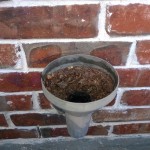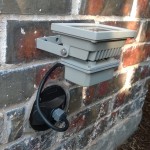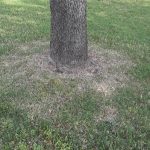 I’m not an arborist or tree expert. I’m a sprinkler and landscape lighting repair business. I am also a homeowner that has had to learn about tree root flare on my own with my trees. I’ve come to the conclusion that exposing the root flare is great for trees. I also love how much of a trees character is revealed on a mature tree when their root flare is exposed.
I’m not an arborist or tree expert. I’m a sprinkler and landscape lighting repair business. I am also a homeowner that has had to learn about tree root flare on my own with my trees. I’ve come to the conclusion that exposing the root flare is great for trees. I also love how much of a trees character is revealed on a mature tree when their root flare is exposed.
 I can’t not notice all the trees around the Collin County area with mulch around the trees. This has become my pet peeve. I understand if new trees are mulched around the first year or so, but every tree, year after year?! I see a lot of sick looking trees. I don’t know if lack of root flare exposure is the issue, but I know it doesn’t help. I know landscapers sell and install a lot of unneeded mulch to cover up tree root flare. I would think landscapers most of all would know better.
I can’t not notice all the trees around the Collin County area with mulch around the trees. This has become my pet peeve. I understand if new trees are mulched around the first year or so, but every tree, year after year?! I see a lot of sick looking trees. I don’t know if lack of root flare exposure is the issue, but I know it doesn’t help. I know landscapers sell and install a lot of unneeded mulch to cover up tree root flare. I would think landscapers most of all would know better.
I wanted to share my opinion on the subject and bring awareness to others, including my customers. This subject has become somewhat of an obsessive issue since I have learned about it. Now I notice it every day. I’m going to provide some links to help educate homeowners on this issue. I’m providing links I found to other sites because of their information on the subject. If you have your own arborist or landscaper to communicate with about the subject, please do that too.
Link 1: Root Flare Exposure and Tree Health
Link 2: Tree Root Problems
Link 3: Exposing The Root Flare of Your Tree
Link 4: Root Flare Exposure
The pictures are of one of my trees where I exposed the root flare. It took me several hours.
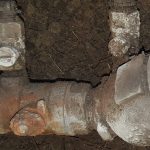 All irrigation systems in Texas need a backflow device installed at the beginning of the system, usually near the water source, like a water meter. A majority of the systems have a double check assembly (DCA). Some have a reduced pressure principle device (RPZ) or a pressure vacuum breaker (PVB, SVB), but this depends on the municipality, geographical location in the state, and whether the system is considered a high hazard or not.
All irrigation systems in Texas need a backflow device installed at the beginning of the system, usually near the water source, like a water meter. A majority of the systems have a double check assembly (DCA). Some have a reduced pressure principle device (RPZ) or a pressure vacuum breaker (PVB, SVB), but this depends on the municipality, geographical location in the state, and whether the system is considered a high hazard or not.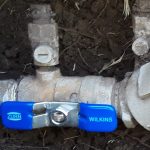 If you have a double check assembly installed, it is likely in a green rectangle box and in the ground. It tends to get buried over time which makes the handles unusable unless the box is cleaned out around the device. It is also likely the handles will be rusted, corroded, or completely gone.
If you have a double check assembly installed, it is likely in a green rectangle box and in the ground. It tends to get buried over time which makes the handles unusable unless the box is cleaned out around the device. It is also likely the handles will be rusted, corroded, or completely gone. I would suggest checking your handle status at least once a year. Clean around them as needed. If it turns out the handles can’t beused due to their condition, they should be replaced. You could, of course, replace the whole device, but that can be expensive. And if the device isn’t up to current state code, it will need to be brought up to code with all the required permits, inspections, and backflow testing.
I would suggest checking your handle status at least once a year. Clean around them as needed. If it turns out the handles can’t beused due to their condition, they should be replaced. You could, of course, replace the whole device, but that can be expensive. And if the device isn’t up to current state code, it will need to be brought up to code with all the required permits, inspections, and backflow testing.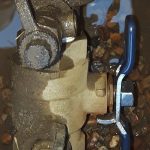 I offer a handle replacement service that is not expensive compared to a full device replacement. I carry the tools and supplies needed to replace both handles on the spot. It usually takes less than two hours and includes box clean up around the device, handle removals, grinding and rethreading brass stems, handle installations, and handle testing to make sure the valves isolate the main line properly.
I offer a handle replacement service that is not expensive compared to a full device replacement. I carry the tools and supplies needed to replace both handles on the spot. It usually takes less than two hours and includes box clean up around the device, handle removals, grinding and rethreading brass stems, handle installations, and handle testing to make sure the valves isolate the main line properly.